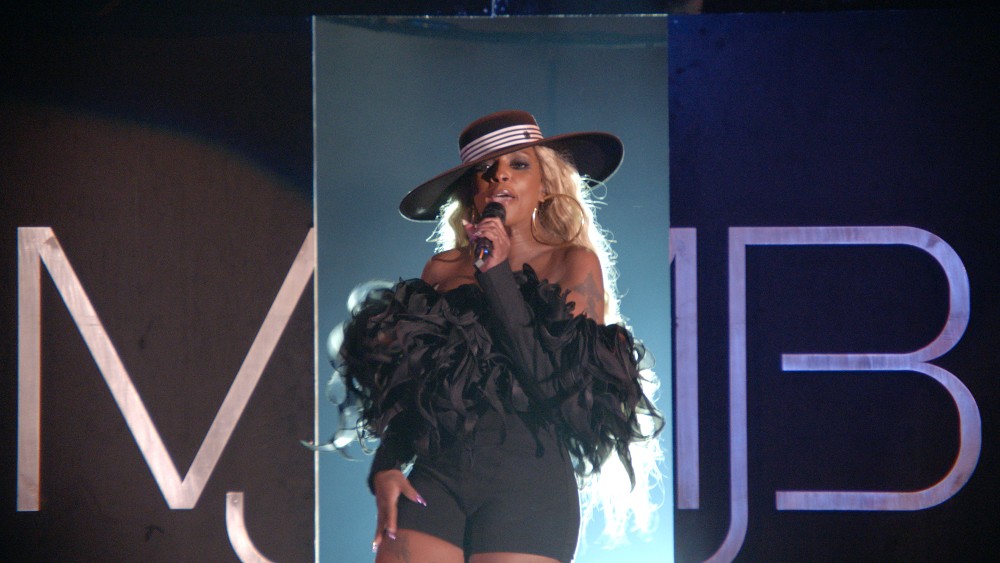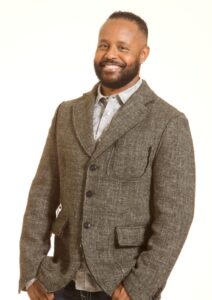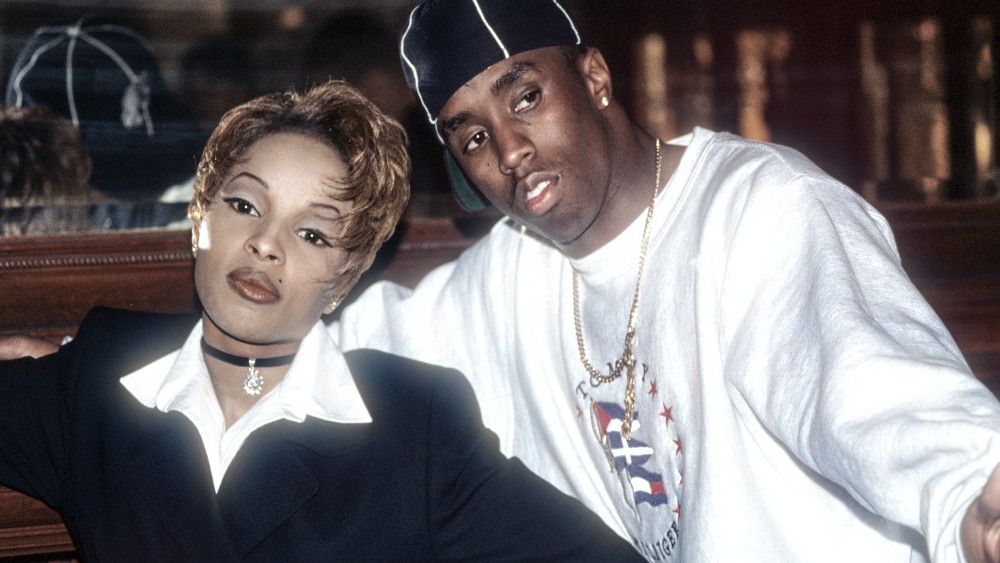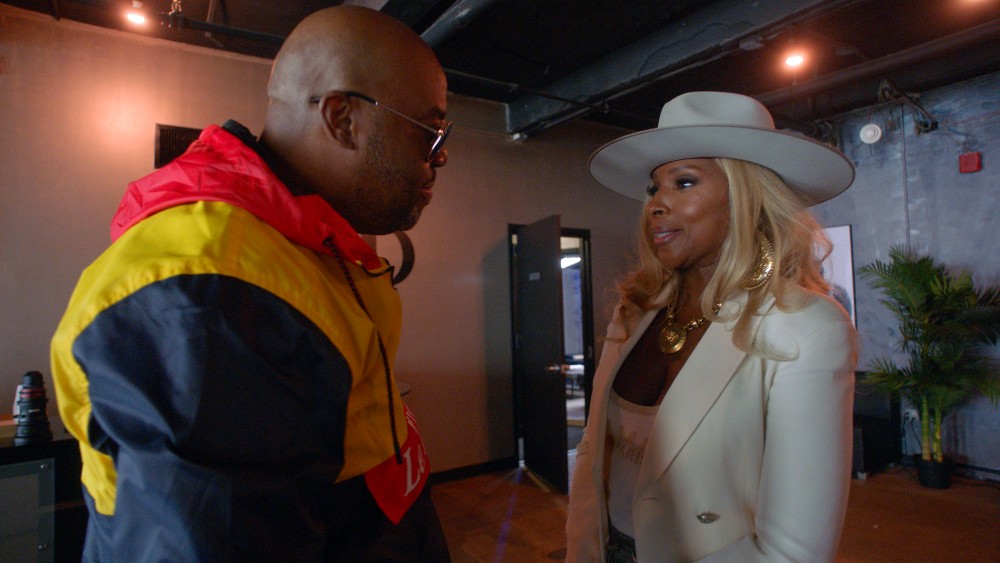
In 1994, Mary J. Blige released the album My Life, a confessional collection of songs relaying her battles with abuse, depression, and addiction. Through the years it became an anthem to her fans, who, facing similar demons, found solace in Blige’s lyrics and music. To commemorate the 25th anniversary of the Grammy®-winning LP, Director Vanessa Roth brought the singer, and the most influential players in her life together to tell the stories behind Blige’s rise from the housing projects of New York to international stardom, becoming a nine-time Grammy®-winning recording artist. The result is the Amazon documentary Mary J. Blige’s My Life.
To complement, but not overshadow her music, five-time Grammy-award winner Mervyn Warren came highly recommended by producer Quincy Jones to compose the score. Warren virtually kept in touch with Jones during lockdown to get feedback from his mentor and friend.
More than qualified for the job, Warren’s musical resume boasts a former membership and producer of the acapella sextet Take 6, along with producing such artists as Whitney Houston, Boyz II Men, Barbra Streisand, Rascal Flatts, Michael Bublé, Chicago, and Queen Latifah, to name a few. He earned his first Grammy in 1992 for the multi-genre styles of Handel’s Messiah: A Soulful Celebration, combining jazz, gospel, reggae, and R&B which caught the ears of Disney to score the arrangements for Lauren Hill and the kids in Sister Act 2. He also composed orchestral scores for such films as The Wedding Planner, and A Walk To Remember, as well as produced and arranged the soundtrack for The Preacher’s Wife.
Warren stayed clear of any R&B elements which were substantially heard in Blige’s music; opting instead to create more traditional sounding musical cues. Oddly enough, Warren met Blige once in passing, as he revealed to Below The Line, but he worked closely with Roth to find the perfect emotional tone to illustrate some of the film’s poignant scenes and unique approach to scoring the animated sequences.

Below The Line: Is it true you only met Mary J. Blige once?
Mervyn Warren: To my disappointment, I didn’t actually work directly with Mary. I’ve actually only met Mary once in person. It was years, and it’s kind of funny. It was at Neiman Marcus. I was going to Sundance, and I was shopping for a coat, because we don’t wear them in L.A. It was in an elevator going up to the men’s department, and there she was. I said, “Oh, hi, I’m Merv, formally of Take 6.” And she goes, “Oh hi, nice to meet you.” And that was it. [laughs]
BTL: How did you come to work on this project?
Warren: Mary’s in the film talking about her life and her experiences, the ups and the downs, but the film had been shot and edited by Vanessa, who did a wonderful job, and they needed a score. Mary has been friends for many years with Quincy Jones, and I have been friends for many years with Quincy. When Mary called Quincy and said, “I need a score for my documentary,” Quincy said, “I have a guy.” I’m looking forward to meeting her again. I know that she weighed in on this score and said that she loved it.
BTL: Did you run your ideas by Quincy Jones?
Warren: Absolutely. I sent everything to him. I wrote things, and I prepared a package. It might have played out differently had the pandemic not have impacted our lives. Quincy was on absolute lockdown as our older citizens were at even higher risk. Had that not been the case, I would’ve gone up to the house to watch the movie together and talk about it. We had a date to coincide with his vaccinations, for Quincy to see the film, because they had to be able to take it to him, so it gave me a little extra time to kind of tweak some things. He did have a few comments on a few scenes, like the one where Mary is talking about the first time the record executive went to Yonkers to visit her. They showed that scene in animation where he’s wearing these leopard pants, and he drives up in a BMW. Mary was nervous about this rich guy coming to see her in the projects. Because it was animated, I went a little over the top with a sort of Superfly treatment with a wah-wah guitar. Quincy thought that was a little over the top and to dial that one back, which I did. I took out the wah-wah thing and kept the original palette of electric piano and bass and a light rhythm and let the dialogue speak for itself.
BTL: How did you collaborate with the director Vanessa Roth to find the right tone?
Warren: Mary had conveyed some ideas to Vanessa about the tone of the story. Of course, Vanessa had her own ideas, and so we had a meeting of what they wanted the score to be like. Then I plunged in. Of course, at the beginning of any score, you try things to determine the tone. In the film, they used the music from her album My Life to punctuate moments of her life that she talks about. We wanted the score to complement and yet contrast the songs. There are songs that are energetic and heart-rendering. There’s a lot of one style of music, and you want to contrast that with something else. Vanessa wanted traditional elements like strings and guitar; a contemporary score, but not an R&B score.

BTL: How did you musically illustrate those traditional elements?
Warren: I did use a lot of guitar and strings and a lot of electric piano. It’s subtle, but Mary has a lot of acoustic and electric piano in her songs, so that’s one element that the score and the songs have in common. I do use some rhythm, but it’s very light. But most important besides the piano and strings, Vanessa’s idea, which I love, is to use a solo voice in certain cues. There are these animated sequences that I think are so amazing, and they often talk about certain periods in Mary’s life as a young girl or a teenager, and some adulthood as well. The solo voice represented loneliness, longing, contemplation. I took it a step further, because the film is demarcated with these chapter headings, so I used the solo voice over those chapters.
BTL: Can you elaborate on using a solo voice?
Warren: It’s an actual voice of a woman singing. During the pandemic where everybody was working on their own, I did the originals myself because I do sing, but we wanted a female voice, or I used a sample of a woman’s voice. Ultimately, they were replaced by Tahillah Alphonso. It was important to me because I didn’t want Mary’s fans to hear a voice that they thought was Mary, so I made sure that I used a voice that was obviously not Mary. It’s a pure, almost child-like young woman’s voice singing, “Oohs,” and it’s very simple but powerful. She did a fantastic job.
BTL: What are the differences between scoring a documentary vs. a narrative film?
Warren: You know, there’s a lot of talking in the film. Ordinarily, in a narrative film, you have a scene where people are just sort of walking quietly and there are moments where the music gets to raise its hand and say, “Hi, I’m music.” There weren’t many of those in this movie because there’s a lot of talking, but the animation visually allowed the music to be a little more playful. I use the word playful carefully because those scenes are often poignant, so I don’t want us to start having fun. It’s not Tom & Jerry. In the other scenes where people are talking, the music has to continue, but it has to be restrained and understated so as not to compete with the speaking.
BTL: What was one of your favorite animated sequences to score?
Warren: We are visually transported into another world and another time with the animation, so the piano gets a little more animated, and I provided sound effects like little whooshes to underscore the animation. There’s one animated scene which is kind of dark where Mary is talking about her depression, but there is water swirling, and she opens a window and clouds move in. Where the curtains open and the clouds come into her living room, describing a vision that she had, I got to play with whooshes and sound effects that you wouldn’t normally do in a regular scene because they are fanciful and a bit fantastic. It allowed the music to be a little quirkier, because she was talking about a mind-altering experience.

BTL: Would you say you’ve had a career of mind-blowing experiences, beginning with meeting Quincy Jones?
Warren: Yes! I met Quincy because of Take 6, who was also a Warner Brothers artist at the time. They took us up to Quincy’s house to meet him almost 30 years ago. I’ll never forget he had the album, The Dude, and that sculpture of the album cover was sitting on the coffee table. At the time, he said they were getting over 200 cassette tapes in his office for him to consider. He said after getting about 40 copies of our album from our friends saying, “You gotta hear this,” he figured he better listen to it. I told him very brazenly that day on the way out the door, “I’m a producer and a film composer. Please keep me in mind.” And you know it paid off. He has hired me numerous times for various projects. I love working with him and for him. He’s been a mentor as well as a friend. It’s been a wonderful relationship and this project is just the latest manifestation of that.
BTL: What do you hope audiences come away with when they hear your music in the documentary?
Warren: Many of her fans may not know the demons she was fighting to become this big star. I think that will be helpful and healing to people to know that everyone goes through the ups and the downs. Music is healing and having her talk about specific songs that her fans know backwards and forwards, they may not know what she was thinking at the time and what she was going through and how those songs were a catharsis for her. I hope my music helps to support everyone telling Mary’s heartfelt story of pulling yourself together, getting out of hard times and making something happen, and being an inspiration to women and men despite their circumstances.
Mary J. Blige’s My Life is now playing on Amazon Prime Video. All photos courtesy of Amazon Studios, except where noted.





